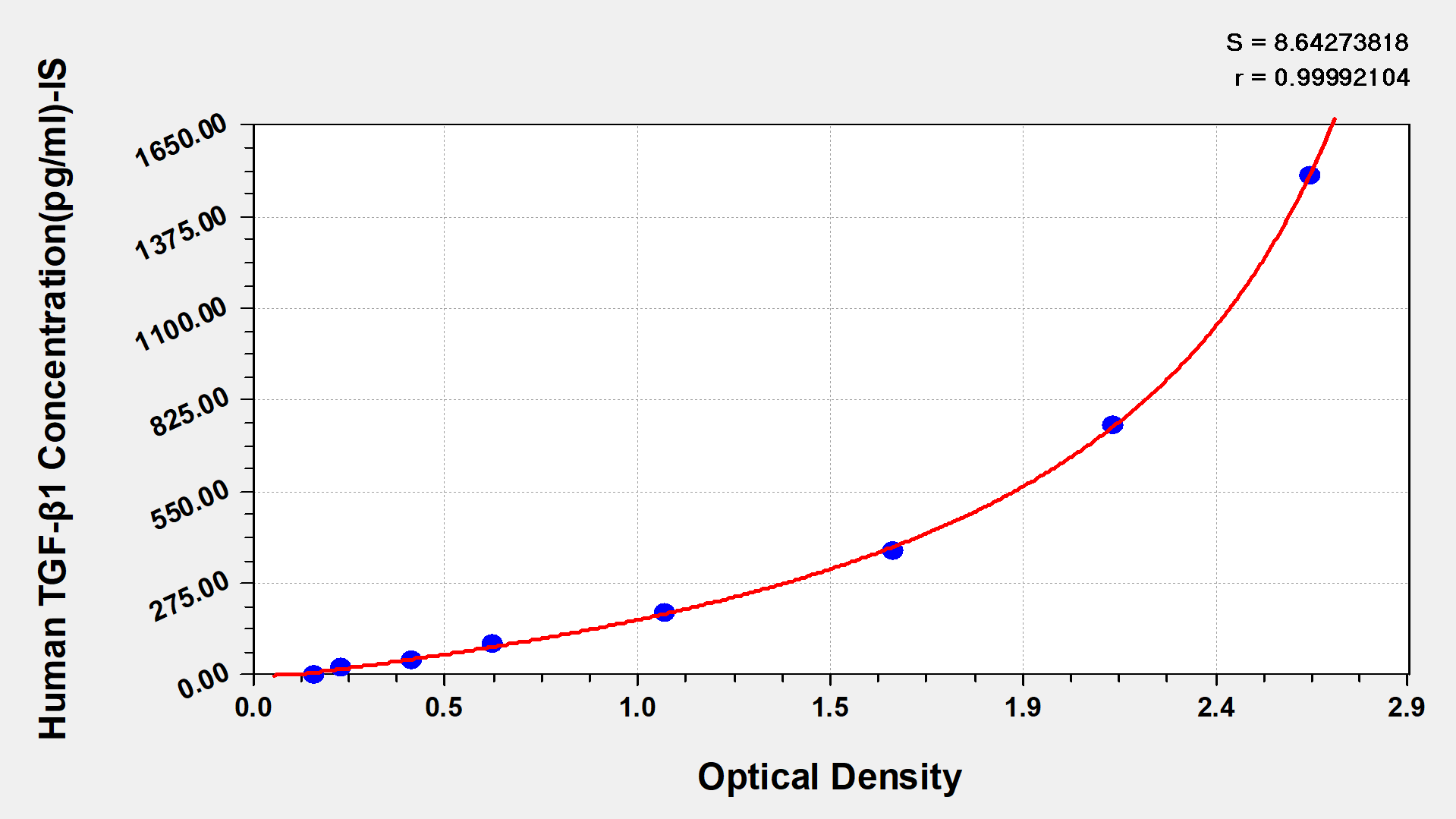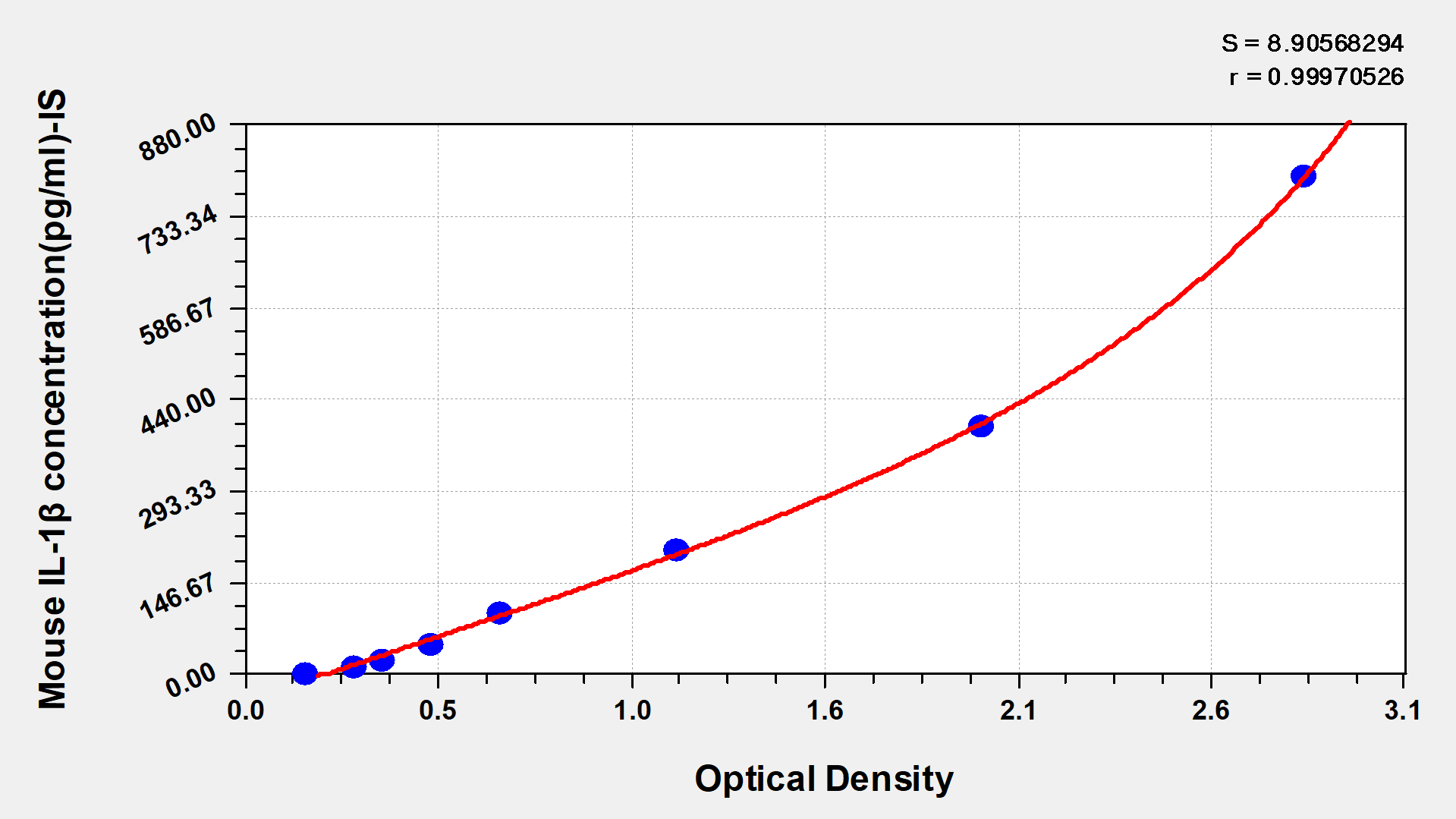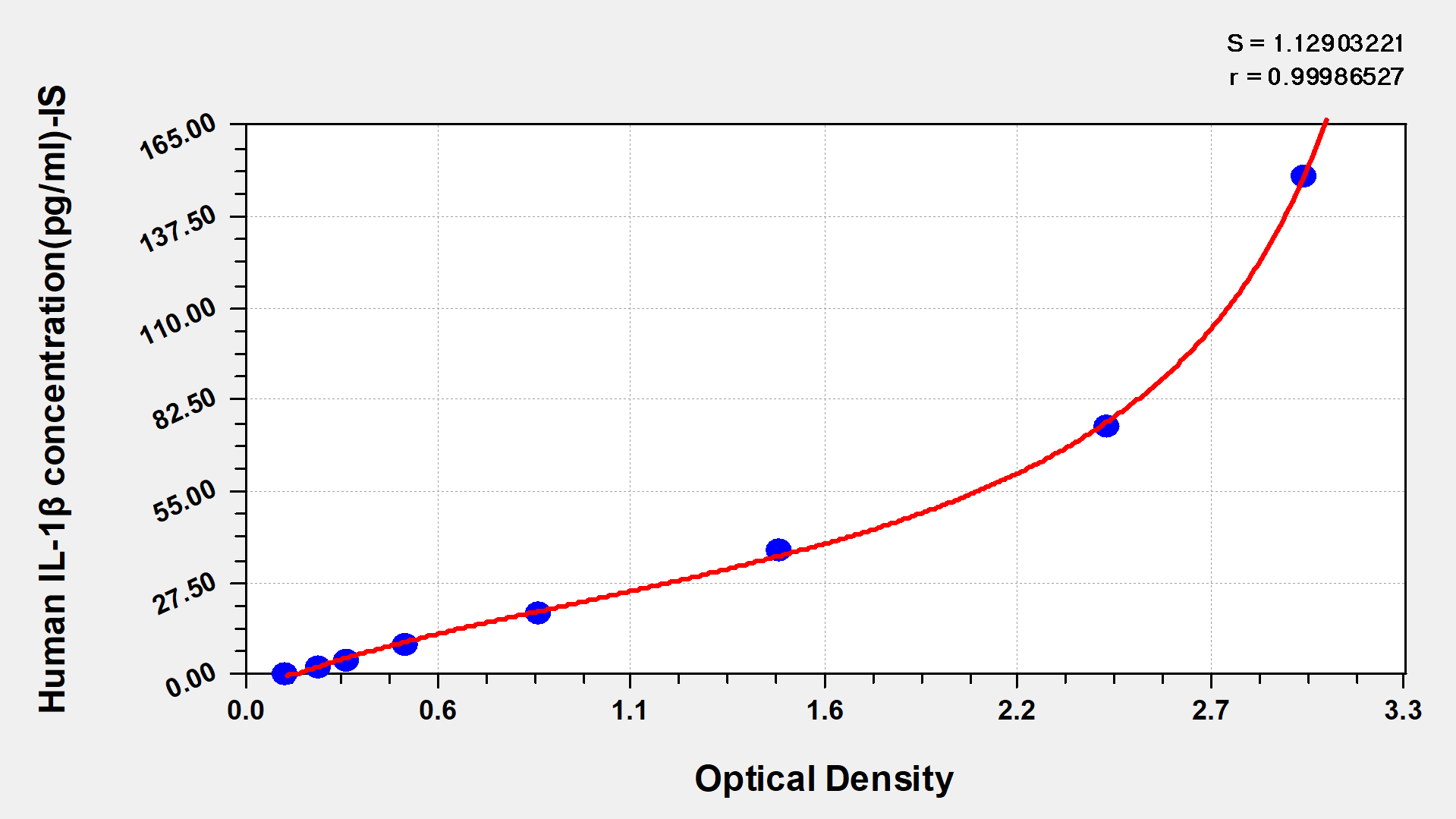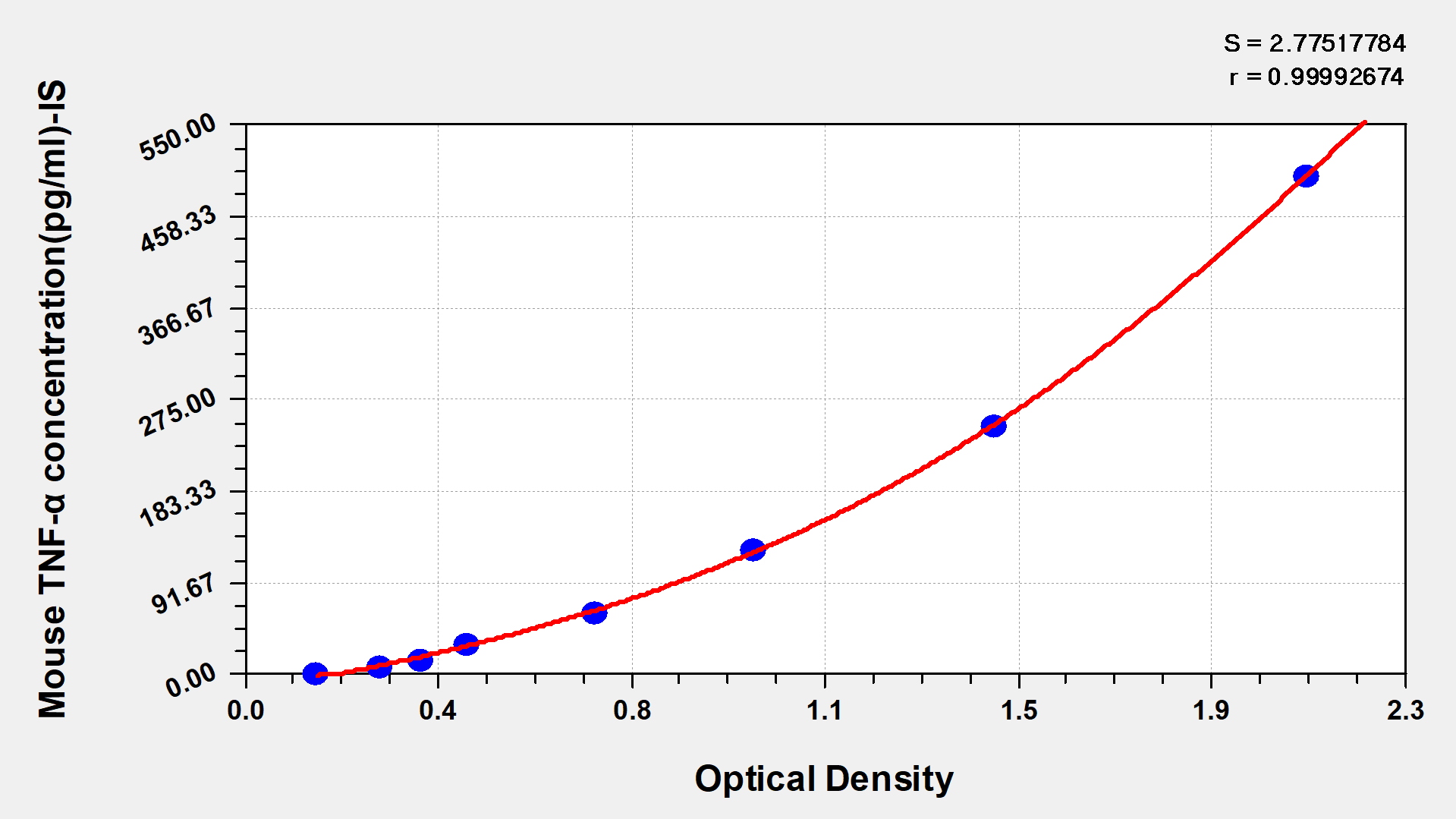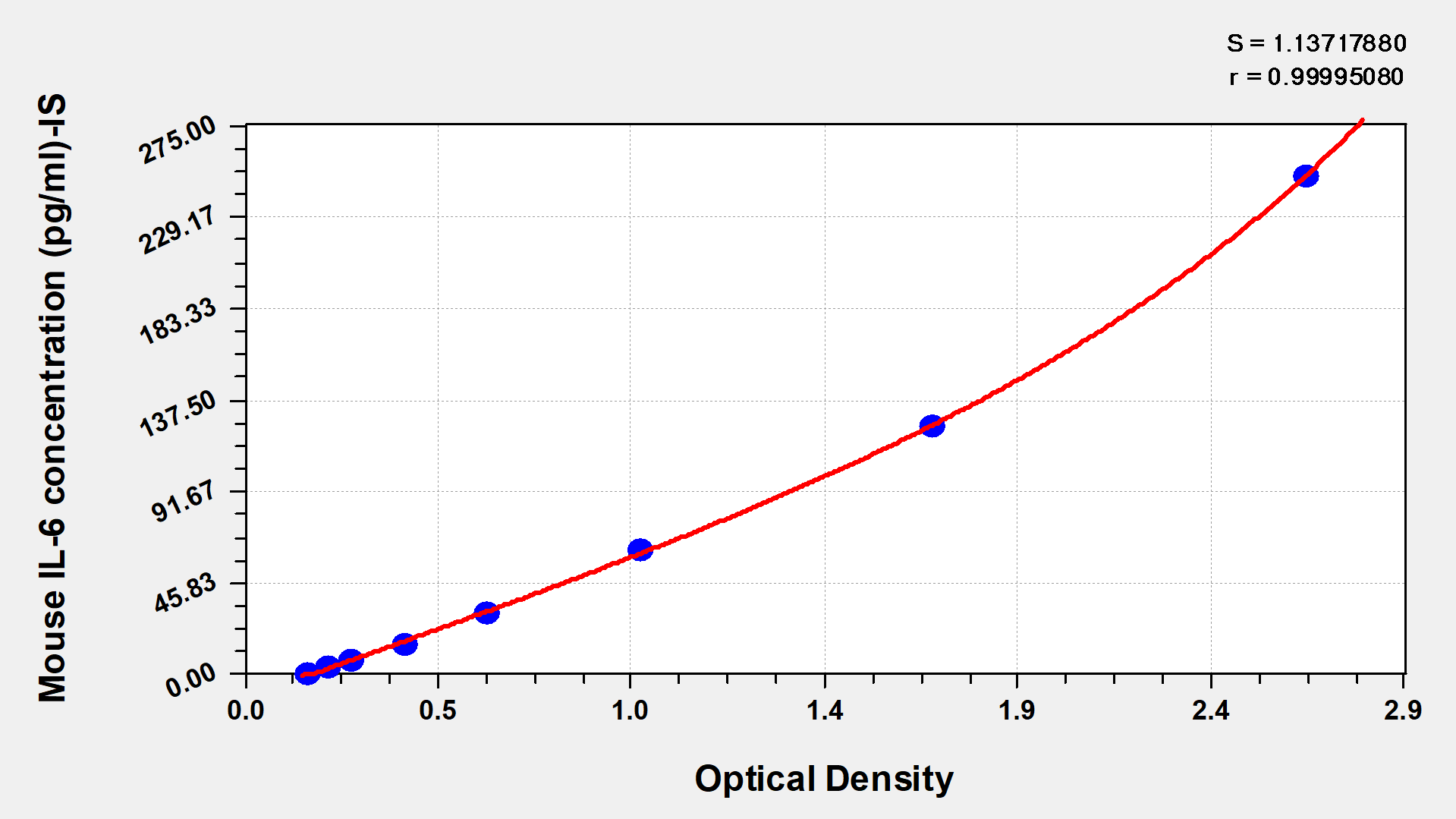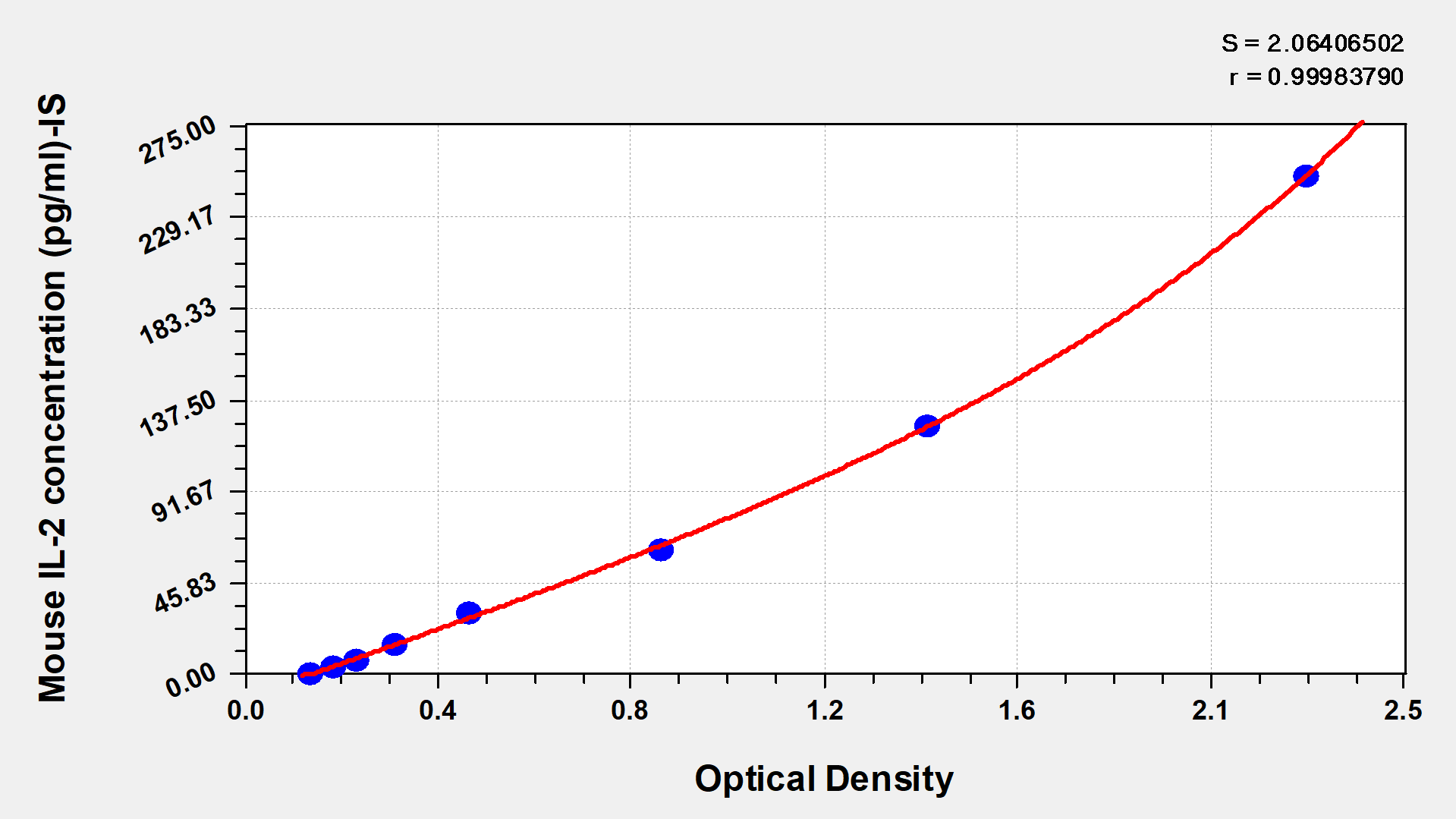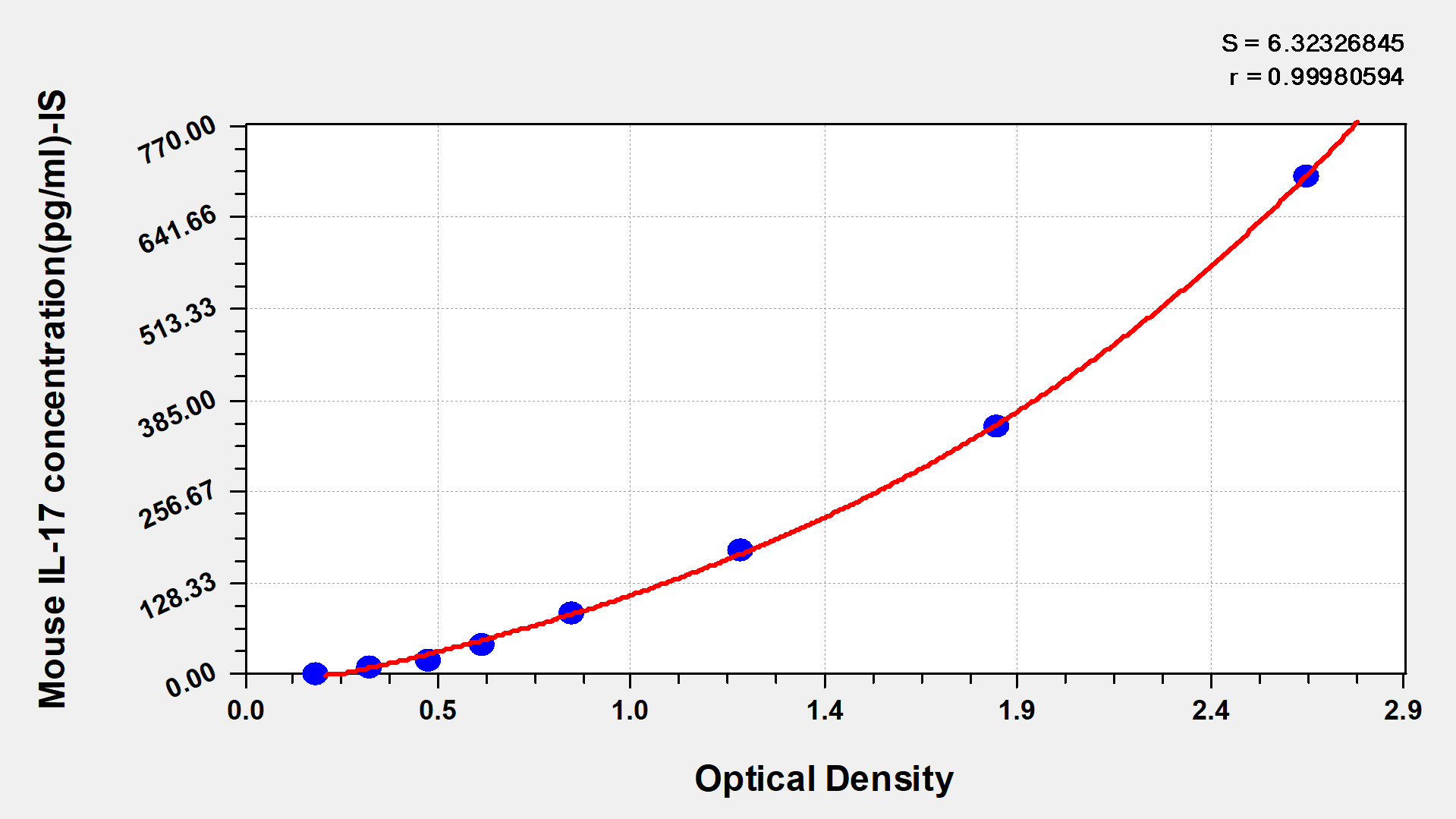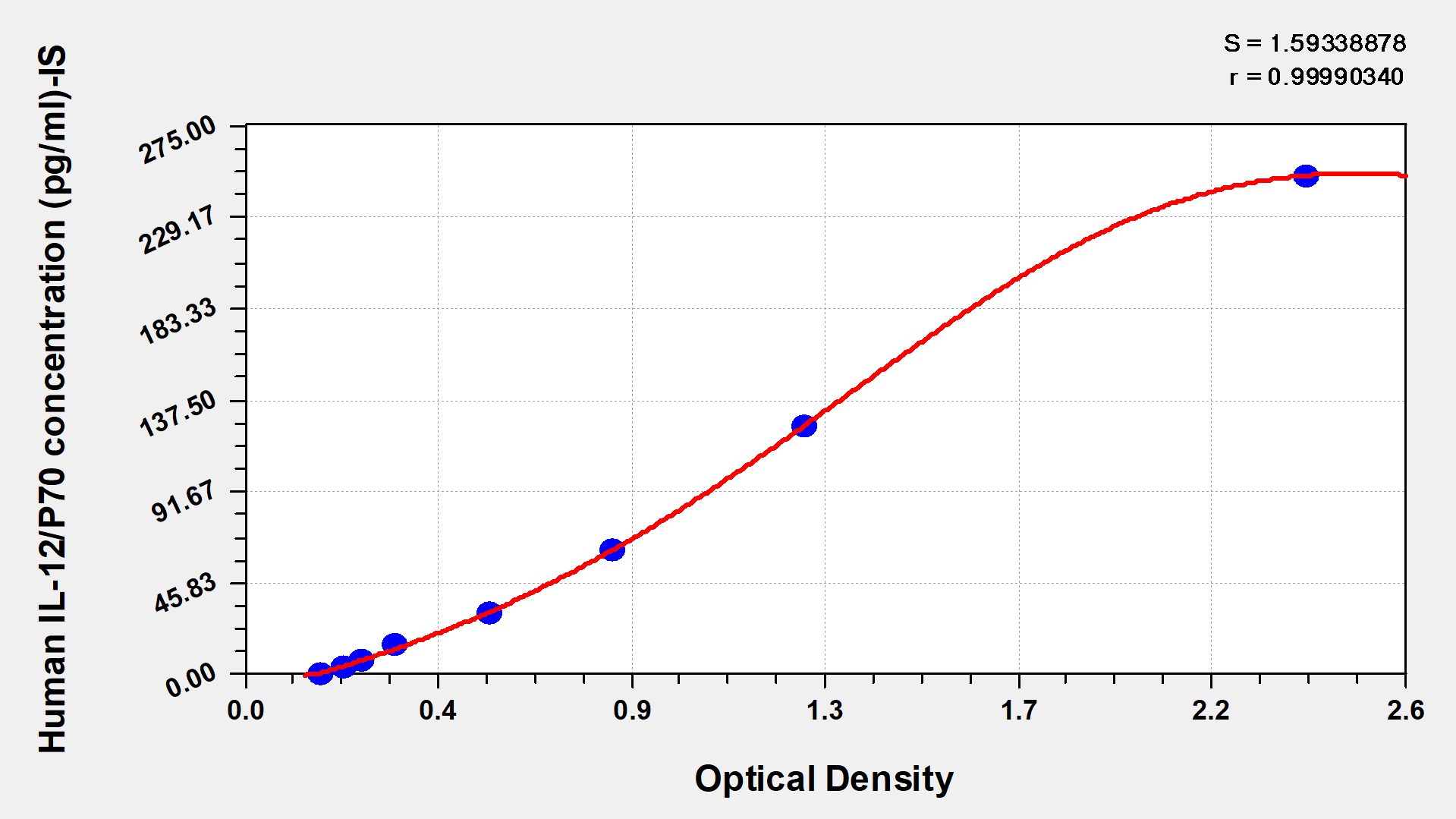Mouse Lymphocyte activation gene 3 protein(LAG3) ELISA kit
-
中文名稱:小鼠淋巴細(xì)胞活化基因3蛋白(LAG3)酶聯(lián)免疫試劑盒
-
貨號(hào):CSB-EL012719MO
-
規(guī)格:96T/48T
-
價(jià)格:¥3600/¥2500
-
其他:
產(chǎn)品詳情
-
產(chǎn)品描述:小鼠淋巴細(xì)胞活化基因3蛋白(LAG3)酶聯(lián)免疫試劑盒(CSB-EL012719MO)為雙抗夾心法ELISA試劑盒,定量檢測(cè)血清、血漿、組織勻漿樣本中的LAG3含量。LAG3,全稱淋巴細(xì)胞活化基因3蛋白,是一種免疫球蛋白超家族成員,主要在T細(xì)胞上表達(dá)。它通過與MHC II類分子結(jié)合,抑制T細(xì)胞活性,從而在免疫逃逸中發(fā)揮作用。研究顯示,LAG3的泛素化修飾是其激活的關(guān)鍵,通過阻礙膜結(jié)合釋放FSALE基序,激活LAG3的抑制功能,為癌癥免疫治療提供了新的靶點(diǎn)。試劑盒檢測(cè)范圍為1.25 ng/mL-80 ng/mL,科研人員可通過定量分析小鼠模型中的LAG3表達(dá)水平,廣泛應(yīng)用于腫瘤微環(huán)境研究、免疫治療藥物開發(fā)、免疫相關(guān)疾病動(dòng)物模型評(píng)價(jià)等基礎(chǔ)研究領(lǐng)域,為探索LAG3在免疫調(diào)控網(wǎng)絡(luò)中的作用提供可靠工具。本品僅用于科研,不用于臨床診斷,產(chǎn)品具體參數(shù)及操作步驟詳見產(chǎn)品說明書。
-
別名:Lag3 ELISA Kit; Lymphocyte activation gene 3 protein ELISA Kit; LAG-3 ELISA Kit; Activation-induced cytidine deaminase-linked autoimmunity protein ELISA Kit; Aida ELISA Kit; CD antigen CD223) [Cleaved into: Secreted lymphocyte activation gene 3 protein ELISA Kit; sLAG-3)] ELISA Kit
-
縮寫:
-
Uniprot No.:
-
種屬:Mus musculus (Mouse)
-
樣本類型:serum, plasma, tissue homogenates
-
檢測(cè)范圍:1.25 ng/mL-80 ng/mL
-
靈敏度:0.31 ng/mL
-
反應(yīng)時(shí)間:1-5h
-
樣本體積:50-100ul
-
檢測(cè)波長(zhǎng):450 nm
-
研究領(lǐng)域:Immunology
-
測(cè)定原理:quantitative
-
測(cè)定方法:Sandwich
-
精密度:
Intra-assay Precision (Precision within an assay): CV%<8% Three samples of known concentration were tested twenty times on one plate to assess. Inter-assay Precision (Precision between assays): CV%<10% Three samples of known concentration were tested in twenty assays to assess. -
線性度:
To assess the linearity of the assay, samples were spiked with high concentrations of mouse LAG3 in various matrices and diluted with the Sample Diluent to produce samples with values within the dynamic range of the assay. Sample Serum(n=4) 1:5 Average % 93 Range % 89-97 1:10 Average % 104 Range % 98-107 1:20 Average % 91 Range % 84-94 1:40 Average % 99 Range % 94-102 -
回收率:
The recovery of mouse LAG3 spiked to levels throughout the range of the assay in various matrices was evaluated. Samples were diluted prior to assay as directed in the Sample Preparation section. Sample Type Average % Recovery Range Serum (n=5) 90 85-95 EDTA plasma (n=4) 95 88-98 -
標(biāo)準(zhǔn)曲線:
These standard curves are provided for demonstration only. A standard curve should be generated for each set of samples assayed. 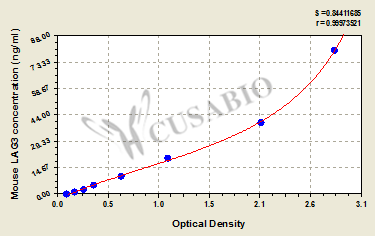
ng/ml OD1 OD2 Average Corrected 80 2.859 2.745 2.802 2.694 40 2.042 2.078 2.060 1.952 20 1.133 1.112 1.123 1.015 10 0.663 0.643 0.653 0.545 5 0.372 0.382 0.377 0.269 2.5 0.275 0.281 0.278 0.170 1.25 0.184 0.178 0.181 0.073 0 0.109 0.107 0.108 -
數(shù)據(jù)處理:
-
貨期:3-5 working days
引用文獻(xiàn)
- A signal-decreased electrochemical immunosensor for the sensitive detection of LAG-3 protein based on a hollow nanobox-MOFs/AuPt alloy WeiXu.et al,Biosensors and Bioelectronics,2018
相關(guān)產(chǎn)品
靶點(diǎn)詳情
-
功能:Lymphocyte activation gene 3 protein: Inhibitory receptor on antigen activated T-cells. Delivers inhibitory signals upon binding to ligands, such as FGL1. FGL1 constitutes a major ligand of LAG3 and is responsible for LAG3 T-cell inhibitory function. Following TCR engagement, LAG3 associates with CD3-TCR in the immunological synapse and directly inhibits T-cell activation. May inhibit antigen-specific T-cell activation in synergy with PDCD1/PD-1, possibly by acting as a coreceptor for PDCD1/PD-1. Negatively regulates the proliferation, activation, effector function and homeostasis of both CD8(+) and CD4(+) T-cells. Also mediates immune tolerance: constitutively expressed on a subset of regulatory T-cells (Tregs) and contributes to their suppressive function. Also acts as a negative regulator of plasmacytoid dendritic cell (pDCs) activation. Binds MHC class II (MHC-II); the precise role of MHC-II-binding is however unclear.; May function as a ligand for MHC class II (MHC-II) on antigen-presenting cells (APC), promoting APC activation/maturation and driving Th1 immune response.
-
基因功能參考文獻(xiàn):
- upregulated in the central nervous system by intraepithelial lymphocytes from the gut epithelium of myelin oligodendrocyte glycoprotein(35-55)-specific T-cell receptor transgenic mice PMID: 27198196
- thi study shows that LAG-3 directly modulates the size of the T cell response and support the use of LAG-3 blockade regimens to enhance CD8+ T cell responses PMID: 27206765
- Study suggests that expression of the inhibitory receptors PD-1 and LAG-3 on CD4(+) T cells and their reduced IL-2 production are common characteristic features of Plasmodium infection. PMID: 26696540
- An IL-27/Lag3 axis enhances Foxp3+ regulatory T cell-suppressive function and therapeutic efficacy. PMID: 26013006
- LAG3 and PD1 co-inhibitory molecules have roles in collaborating to limit CD8+ T cell signaling and dampen antitumor immunity in a murine ovarian cancer model PMID: 26318293
- Poxvirus-Based Active Immunotherapy with PD-1 and LAG-3 Dual Immune Checkpoint Inhibition Overcomes Compensatory Immune Regulation, Yielding Complete Tumor Regression in Mice. PMID: 26910562
- Lymphatic endothelial cells (LECs) serve as an antigen reservoir for CD4 T-cell tolerance, and MHC-II molecules on LECs are used to induce CD8 T-cell tolerance via LAG-3. PMID: 25857745
- LAG-3 expression on Tconv cells makes them more susceptible to Treg based suppression, and also regulates the development of a TH1 T-cell response. PMID: 25372844
- LAG-3 exerts an important regulatory effect on autoimmunity. PMID: 25122007
- Lag-3 is an important regulatory molecule involved in alloreactive T cell proliferation and activation after bone marrow transplantation. PMID: 24475140
- these results define a strong synergy between the PD-1 and LAG-3 inhibitory pathways in tolerance to both self and tumor antigens. PMID: 22186141
- We conclude that LAG-3 is necessary for regulating CD4(+) and CD8(+) T cell function during autoimmune diabetes PMID: 21873518
- LAG-3 is required for long-term peripheral CD8 but not CD4 T-cell tolerance and this requirement is CD8 cell-extrinsic. PMID: 21422469
- LAG-3 acts synergistically with PD-1 and/or other immunoregulatory genes to prevent autoimmunity in mice. PMID: 21300912
- This significant intracellular storage of LAG-3 appears to facilitate its rapid translocation to the cell surface following T-cell activation, which was much faster for LAG-3 than CD4 PMID: 20391435
- blockade of LAG-3 did not rescue cytokine production by virus-specific CD8 T cells and did not alter the virus titer in various organs PMID: 19880580
- Lag3 inhibits CD4-dependent, but not CD4-independent, T cell function via its cytoplasmic domain. PMID: 12421911
- LAG-3 regulates the expansion of activated T cells. PMID: 12672063
- LAG-3 activates antigen-presenting cells through MHC class II signalling, leading to increased antigen-specific T-cell responses in vivo. PMID: 14644131
- data suggest that LAG-3 negatively regulates T cell expansion and controls the size of the memory T cell pool PMID: 15100286
- LAG-3 marks regulatory T cell populations and contributes to their suppressor activity PMID: 15485628
- LAG-3 is cleaved within the D4 transmembrane domain connecting peptide into two fragments that remain membrane associated. Modulation of LAG-3 cleavage may contribute to the function of this key regulatory T cell protein. PMID: 15557174
- LAG-3 negatively regulates T cell homeostasis by regulatory T cell-dependent and independent mechanisms. PMID: 15634887
- LAG-3 is a new marker of T cell induced B cell activation. PMID: 15971272
- Metalloprotease-mediated cleavage of LAG-3 controls T-cell proliferation and immune response. PMID: 17245433
- Data demonstrate a direct role for LAG-3 on CD8+ T cells and suggest that LAG-3 blockade may be a potential cancer treatment. PMID: 17932562
- a novel ITAM-mediated inhibitory signaling pathway in DCs triggered by MHC II engagement of LAG-3, providing a molecular mechanism in which regulatory T cells may suppress via modulating DC function. PMID: 18424711
- LAG-3 plays an important but selective cell intrinsic and cell extrinsic role in plasmacytoid dendritic cells biology PMID: 19201841
- signaling through the PD-1 and LAG-3 pathways have distinct functional consequences to CD8 T cells under tolerizing conditions PMID: 19454660
顯示更多
收起更多
-
亞細(xì)胞定位:[Lymphocyte activation gene 3 protein]: Cell membrane; Single-pass type I membrane protein.; [Secreted lymphocyte activation gene 3 protein]: Secreted.
-
組織特異性:Primarily expressed in activated CD4(+) and CD8(+) T-cells. Also expressed in a subset of regulatory T-cells (Tregs), such as natural CD4(+)CD25(+) Tregs. Also expressed on plasmacytoid dendritic cells (pDCs).
-
數(shù)據(jù)庫(kù)鏈接:
Most popular with customers
-
Human Transforming Growth factor β1,TGF-β1 ELISA kit
Detect Range: 23.5 pg/ml-1500 pg/ml
Sensitivity: 5.8 pg/ml
-
-
-
Mouse Tumor necrosis factor α,TNF-α ELISA Kit
Detect Range: 7.8 pg/ml-500 pg/ml
Sensitivity: 1.95 pg/ml
-
-
-
-



